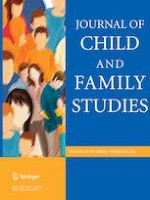11-11-2020 | Original Paper
Gratitude: A Resilience Factor for More Securely Attached Children
Gepubliceerd in: Journal of Child and Family Studies | Uitgave 2/2021
Log in om toegang te krijgenAbstract
Research on the association between childhood attachment and depressive symptoms has primarily focused on the role of risk factors. This resulted in a lack of research on the role of potential resilience factors. In the current study, we suggest that middle childhood secure attachment is linked to adolescents’ trait gratitude, which is linked to the enhanced resilience against the development of depressive symptoms in adolescence. In a longitudinal study, we measured 157 children’s (9–12 years old, 48% boys) attachment appraisals (anxiety, avoidance, and trust), attachment representations (secure base script knowledge, and coherence) and depressive symptoms at baseline, and gratitude and depressive symptoms at follow-up two years later. Results supported our hypotheses that middle childhood attachment was robustly linked with adolescent trait gratitude. Moreover, trait gratitude indirectly linked middle childhood attachment avoidance, trust, and secure base script knowledge to change in depressive symptoms over time. These findings may help explain why more securely attached children are less likely to develop depressive symptoms.
